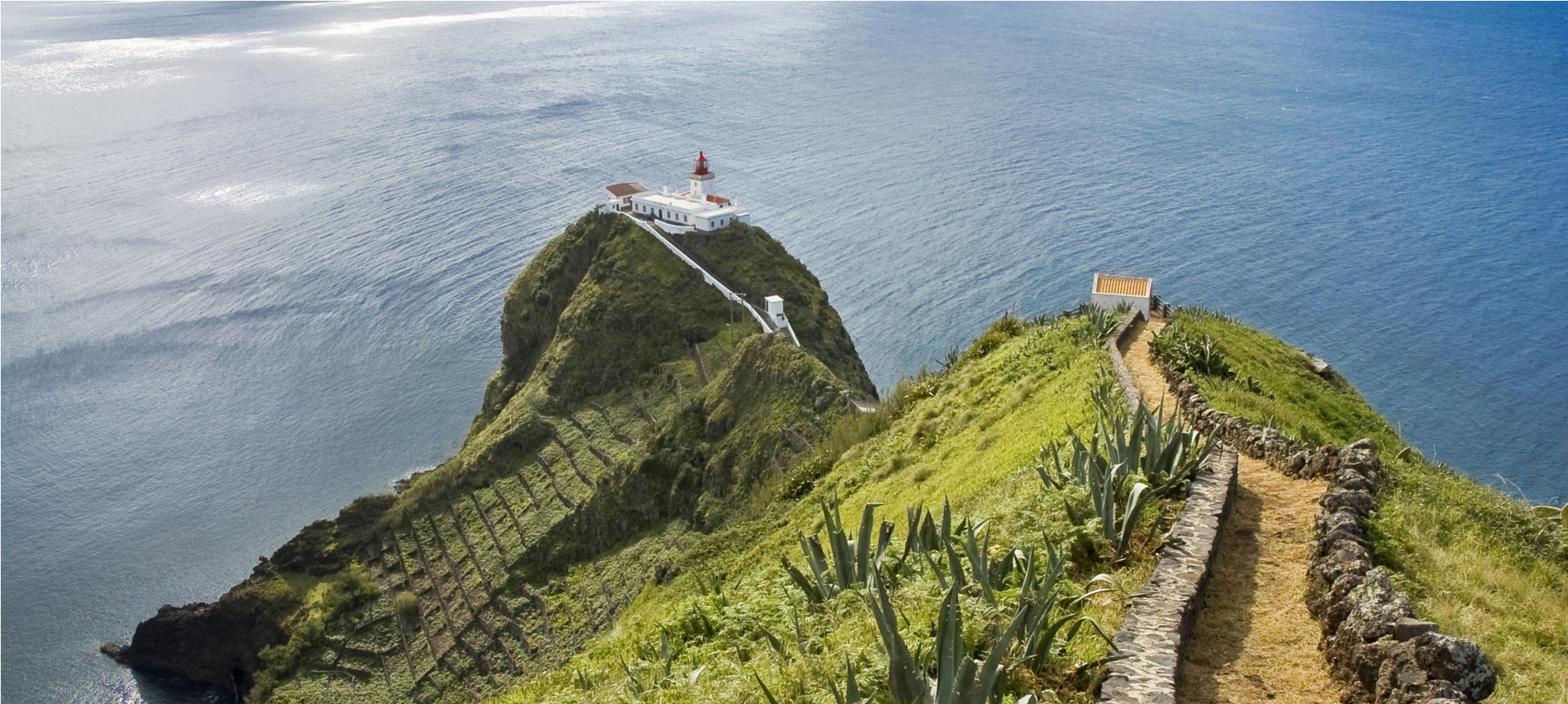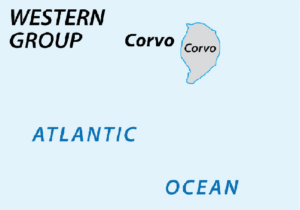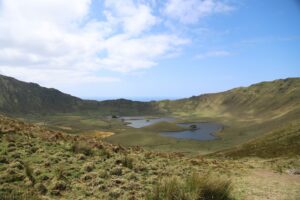Geography and geology of Corvo: small island, great wonders
Corvo Island, the smallest and northernmost of the Azores, offers a fascinating and rugged landscape that captivates visitors. Despite its small size, Corvo’s geography is both distinctive and dramatic.
Population and community
Corvo is home to a small but resilient population of around 400 residents, all of whom live in Vila do Corvo, the island’s only settlement. This tight-knit community is known for its hospitality and dedication to preserving Corvo’s traditions and natural beauty. The island’s small population contributes to its peaceful and tranquil atmosphere, making it a perfect destination for those seeking solitude and a deeper connection with nature.
Caldeirão: Corvo’s iconic volcano crater
The island’s most prominent geographical feature is the Caldeirão, a massive volcanic crater located at the center of the island. This natural wonder is approximately 300 meters deep and 2 kilometers in diameter. Within the crater, visitors can find two picturesque lakes surrounded by lush vegetation, creating a serene and otherworldly environment. The Caldeirão is not only a symbol of Corvo’s volcanic origins but also a haven for unique flora and fauna.
Photo by Ellienore Bradley on Unsplash
Basalt rock formations: Cavaleiro and Marco
To the southwest of the island, two striking basalt rock formations, Cavaleiro and Marco, rise dramatically from the landscape. These unusual geological features are a testament to the island’s volcanic history and are popular spots for photography and exploration.
Low-lying terrain and coastal beauty
Corvo is primarily a low-lying island, with its highest point, Monte Gordo, reaching 718 meters. The island’s coastline is dotted with cliffs and small coves, offering breathtaking views of the Atlantic Ocean and opportunities for birdwatching, particularly during migration seasons.
Share the experience of discovering this incredible archipelago with your loved ones. Book a personalized group trip with Azores.com.


